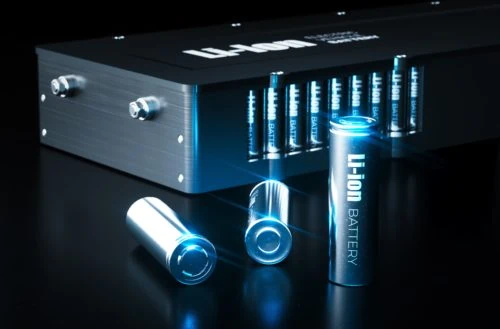
- The batteries are long-lasting and allow for long device use cycles
- The batteries can be recharged relatively quickly
- Li-ion batteries are light in weight
These positive attributes are quickly making lithium-ion batteries a default option. However, there is a small chance that they could burst into flames.
What Is Thermal Runaway?
Li-ion batteries pose a small risk of bursting into flame because of a phenomenon called thermal runaway. If lithium-ion batteries are heated to a temperature above their maximum threshold, this triggers a sequence of chemical breakdowns in the battery. The chemical breakdowns themselves agitate the situation by rapidly increasing the battery’s temperature. As a result, the battery’s materials can ignite and generate intensely hot flames. The most common causes of thermal runaway in lithium-ion batteries are:
- Internal short-circuiting
- External short-circuiting
Both causes can be due to either insufficient battery maintenance or direct physical damage. The risk of thermal runaway is very small, at approximately three packs per million. However, because of the severity of the potential hazard, companies that manufacture or use li-ion batteries need to ensure the problem is satisfactorily eliminated.
Preventing Thermal Runaway in Batteries
Four simple ways manufacturers, suppliers, and users can prevent thermal runaway and sudden fires include:
- Don’t Overcharge. When batteries are charged more than they need, this can damage the battery and increase the risk of thermal runaway.
- Proper Storage Temperature. If li-ion batteries are stored in hot environments, this can make the batteries more vulnerable to the start of a thermal runaway chain reaction.
- Proper Ventilation. When batteries and tangential circuitry overheat, they’re more susceptible to heat damage. Ventilation and air circulation (especially with cool, dry air) can extend the safe lifespan of batteries.
- Replace Old Batteries. While li-ion batteries have extended lifespans, they shouldn’t be used indefinitely. Replace and assess old batteries to ensure you’re only using safe batteries in critical or sensitive equipment.
Transporting Li-Ion Batteries
Throughout the supply chain, manufacturers, distributors, and retailers need to follow regulations and best practices while transporting lithium-ion batteries. Specifically, they need to follow Hazardous Materials Regulations (HMR) rules when transporting li-ion batteries by water, rail, highway, or air.
At Tex Tech, we help transporters follow these rules and requirements with materials such as our Fire Containment Cover (FCC). This cover can lay on palletized cargo, such as containers of li-ion batteries, to starve fires by blocking oxygen from feeding the flames. Freight forwarders, airline operators, and other parties throughout the supply chain can use these covers as a voluntary, supplemental protection to contain and minimize the risk of flame damage and mass thermal runaways. In addition, our materials can be used in the construction of Unit Load Devices (ULD) to provide lithium battery flame protection for these air cargo containers.
Electric Vehicle Fire Risks
While flames from li-ion batteries in consumer electronics are concerning, thermal runaway in li-ion electric car batteries poses a much more severe risk. Firefighters, especially, face unique challenges when they respond to a car accident with an electric car, as the damaged battery may spontaneously ignite and cause severe injuries or death. Not only do li-ion car batteries ignite seemingly spontaneously, but they require a lot of water to put out the flames and can even reignite once the fire has been controlled. At Tex Tech, we’ve developed materials that can contain and help extinguish the flames in minutes. These materials can be used in the construction of the battery box or enclosure and will provide burn-through protection for the vehicle. The materials can also be used in blankets that can contain the toxic fumes, smoke, and flames from a car’s li-ion battery. These systems can be very beneficial for fire departments dealing with a vehicle that keeps reigniting.
Choose Tex Tech for Safer Lithium-Ion Batteries and Solutions
At Tex Tech, we specialize in creating innovative flame-retardant materials for use in the modern consumer, commercial, and industrial world. Our materials can be used during shipping, in aerospace and automotive interiors, and in emergency situations. Contact us today to learn more about our woven and non-woven material solutions, manufacturing capabilities, and custom services. You can also request a quote to get started.